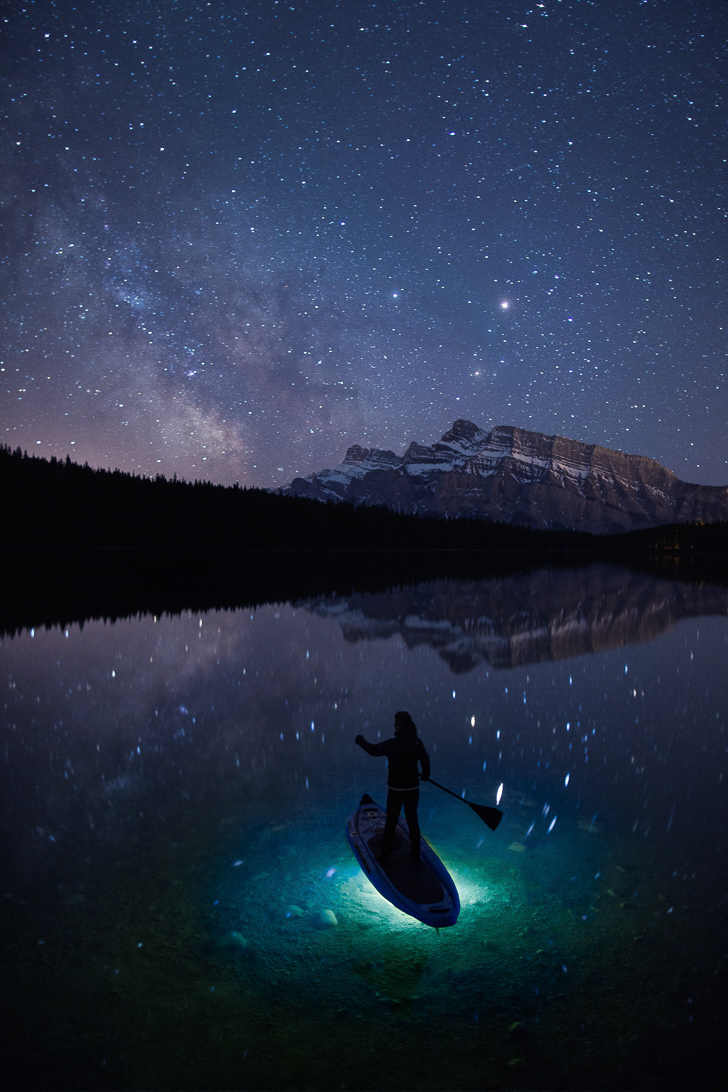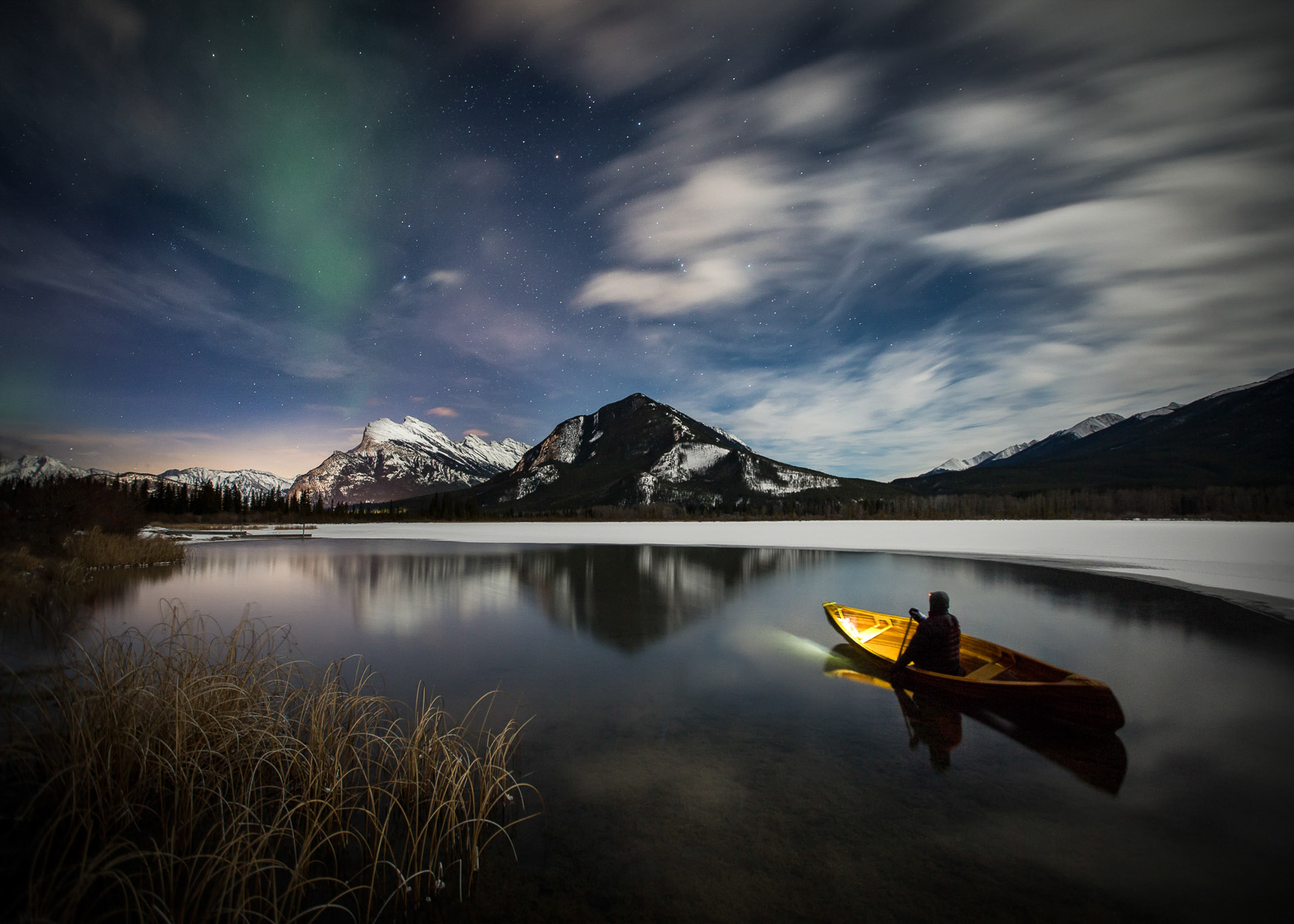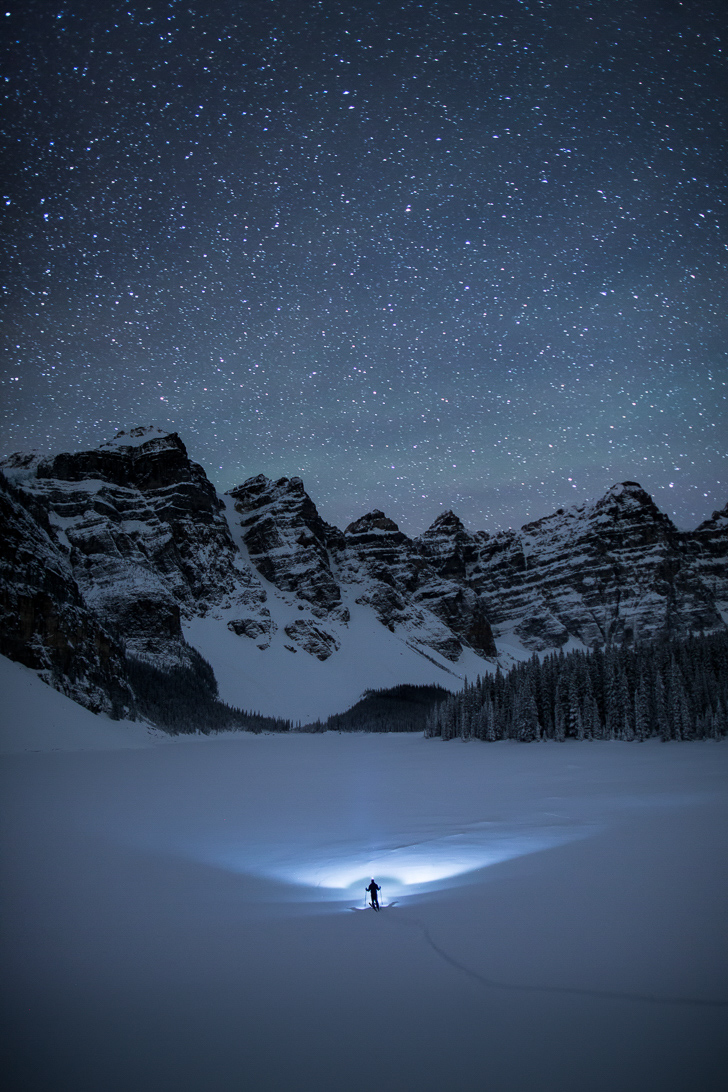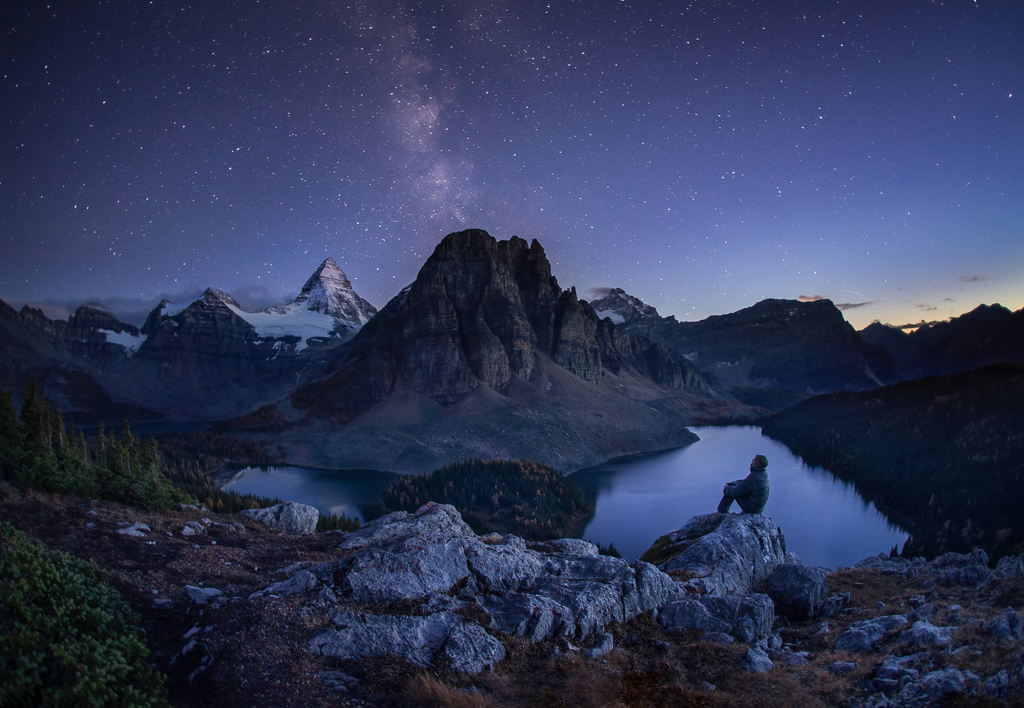
EOS 5D Mark III, EF15mm f/2.8 Fisheye lens, f/2.8, 8 sec, ISO 1600
An incredible night on Yellowknife's amazing ice road: turquoise ice, rising moon and incredible aurora curtains.
Astrophotography presents a whole universe of images to capture. While it is not the simplest type of photography to master, don’t let it stop you from trying. Chances are, you already have the equipment. We speak to Paul Zizka, professional mountain landscape and adventure photographer based in Banff, Alberta, to find out the essentials you’ll need.
Hi Paul! What equipment would a beginner to astrophotography need?
It’s important to use a camera that will allow adjustment of ISO settings, like the EOS 5D Mark III. A tripod to hold the camera still is also a necessity. You’ll also need a remote shutter release or shutter delay setting on the camera to ensure you don’t bump the camera when taking the photo.
Would one require to get a special camera or lens for astrophotography? Or is the kit lens sufficient?
When shooting the night sky, you need to let as much light into the camera as possible. One of the things we can do to help this is to shoot with a wide aperture so more light can be picked up. Different lenses have different maximum apertures and this is known as how “fast” the lens is. It is not necessary but can certainly help achieve sharp, bright photos.
Aside from camera equipment, what else should one pack along?
A headlamp is very helpful. It’ll free up your hands to adjust the camera while still being able to see. They can also be used for different lighting effects in your images. If you are out in cold temperatures it always helps to have warm clothing and spare layers so you are comfortable and don’t rush your shots.
What are some challenges beginners can expect?
The main challenge when starting night photography is focus. Every lens is different and it’ll take some time to get to know where your best focus is. It’s a good idea to be familiar with the location you are planning to shoot before heading out in the dark.
What are your top techniques to help a beginner capture the best astrophotography images?
A great time-saving tip is using a very high ISO when composing and focusing so that you can work with fairly short exposures. It’s also helpful to use the histogram because the brightness of the LCD is misleading at night.

EOS 5D Mark III, EF24mm f/1.4L II USM lens, f/1.8, 30 sec, ISO 1600
Exploring Banff's lakes by starlight as the Milky Way rises over Two Jack Lake.
Weather is a crucial element in astrophotography. What happens when the night becomes cloudy?
Weather can quickly change the shooting conditions and it’s a good idea to check the forecast before you go out. Try to find a cloud map for your area so you know what hours in the night will be the clearest. That way if clouds do appear, you’ll know if they’ll pass soon or if it’s time to head home. The clouds can also add a lot to an image, especially when they show motion in long exposures and bounce off moonlight or light pollution. I don't mind them personally.

EOS 5D Mark III, EF16-35mm f/2.8L II USM lens, f/2.8, 8 sec, ISO 1600
An absolutely perfect night in the mountains: a touch of moonlight, the mountains dressed up in white, "warm" temperatures and the northern lights dancing above!
When are the best times to shoot astrophotography?
It completely changes from day to day. The best time to shoot is when the sky is the darkest. Make sure you check the moon cycles and plan to shoot when the moon isn’t too full or in-between moonrise/set. As with everything in photography, it all depends on what you're after. I like those nights when the moon rises halfway through the night because I get to shoot both very dark skies initially, and then a moonlit landscape.

EOS 5D Mark III, EF24mm f/1.4L II USM lens, f/2, 30 sec, ISO 1600
A solo Winter trip to Moraine Lake rewarded me with a snow-filled and pristine vista, no light pollution, no generator noise, and no other human for at least another 10km.
Does it matter where you place your camera to shoot and why?
For me, composition makes or breaks an image. It’s important to think about where you want elements to appear in the frame and adjust your camera’s position to achieve this.
Shooting the Milky Way -- a good place to start astrophotography? What would you suggest for beginners to shoot?
The Milky Way is fun to shoot and can look great in photos but can be tricky to understand where it will show up in the sky. Try using a night sky app like Photopills to plan ahead so you know where you should be and when. When you’re starting out it’s best to choose nights when there’s plenty of moonlight and gradually work your way towards darker nights.

EOS 5D Mark III, EF16-35mm f/2.8L USM lens, f/2.8, 30 sec, ISO 1600
One of my most memorable nights in the backcountry: self-portrait watching the Milky Way dance above Mount Assiniboine.
What’s the most important advice you’d give to aspiring astrophotographers?
Commit the time. Astrophotography can't be rushed. Everything takes much longer, from the exposures themselves to the time it takes to focus and compose. It's not unusual for me to take a full hour or more to put one single night image together.
Receive the latest updates on photography news, tips and tricks by signing up with us!
Profile of author

Paul Zizka
Specialising in photographing in difficult conditions and hard-to-reach places, Paul Zizka has a passion for shooting alpine sports and backcountry experiences, capturing the spirit of adventurers and finding unusual angles of common mountain subjects. As a landscape photographer, he particularly enjoys the challenge of capturing nature’s beauty at night and the unique features that come with a dark sky – stars, Northern Lights and dramatic silhouettes. His photos have been featured in a variety of publications, including Maclean’s, NatGeo, Alpinist, Huffington Post, The Guardian, Canadian Geographic, Islands, PhotoLife, Fodors.com and explore magazine.

































